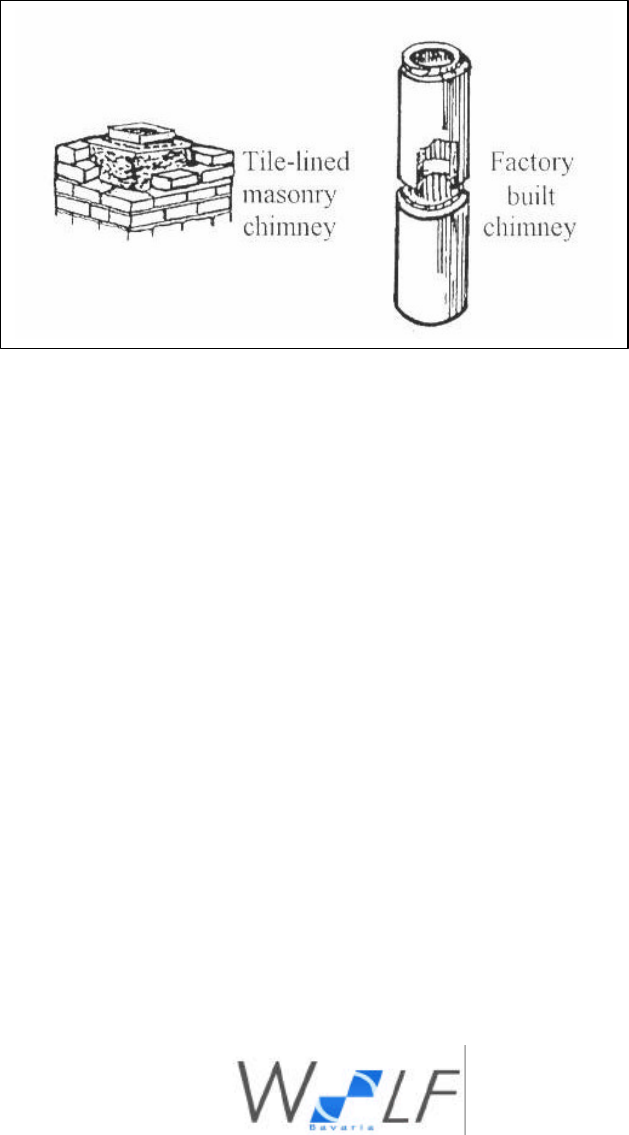
11
2.3 Types of Chimneys
The chimney is a vital part of your woodstove installation. A properly built masonry chimney or a properly installed, fac-
tory built chimney will provide a consistent draft under a variety of weather conditions (a smoking woodstove is usually
caused by a chimney problem). The minimum stove flue size is 6 inches (152 mm) in diameter, which is approximately 28
square inches (711 square mm). The maximum flue size should be no more than three times the cross sectional area, or the
size of the stove flue collar. In this case, that would be no larger than a 10 inch (254 mm) diameter stack, or approximately
85 square inches (216 square cm) maximum.
All chimneys must be installed as specified by local building codes and according to the chimney manufacturer’s instruc-
tions (in the case of a factory built chimney). See the chimney manufacturer’s instructions for exact specifications. Factory
built chimneys must comply with UL 103HT or ULC S629.
2.4 Acceptable Connector Pipe for Installations
For Standard Residential Clearances: 6” (152 mm) minimum, single wall, 25 gage minimum thickness, stove pipe is
acceptable. Three (3) pre-drilled holes are provided in the flue collar for fastening the pipe securely to the woodstove. Use
sheet metal screws for each section when connecting to the manufacturer’s transition piece, usually called a dripless con-
nector, to join single wall pipe to the factory built chimney section.
Minimum Flue Size: The required minimum diameter and area required for the flue size is 6” / 152 mm diameter, which is
approximately 28 square inches / 711 square mm. The maximum flue size should be no more than three times the cross
sectional area of the size of the 6” / 152 mm diameter flue collar. In this case, that would be no larger than 10” (254 mm) in
diameter (area = approx. 85 sq. inches [216 sq. cm]).
Connection To A Factory Built Chimney: This space heater is to be connected to a factory-built chimney, conforming to
CAN / ULC – S629 Standard for 650°C Factory-Built Chimneys.
2.5 Chimney Inspection
Existing chimneys must be inspected before installing your woodstove. Consult your local building department for chimney
code requirements. A masonry chimney must have a code approved liner. This liner must not have broken or missing
pieces. Some non-code masonry chimneys may be brought up to code by being relined.
(Consult your dealer or qualified chimney sweep). Factory built chimneys should also be inspected, first for creosote depos-
its (which should be removed), and then for integrity of the stainless steel liner. Look for obvious bulges in the lining which
may indicate the need to replace that section (use a bright flashlight). Also, inspect the attic to see that the chimney has
proper clearance to combustible framing members. For interior masonry chimneys and most factory built chimneys, this
must be a 2” (51 mm) air space clearance, which must not be filled with insulation or any other material. An exterior ma-
sonry chimney must have a 1” (25.4 mm) air space clearance.


















